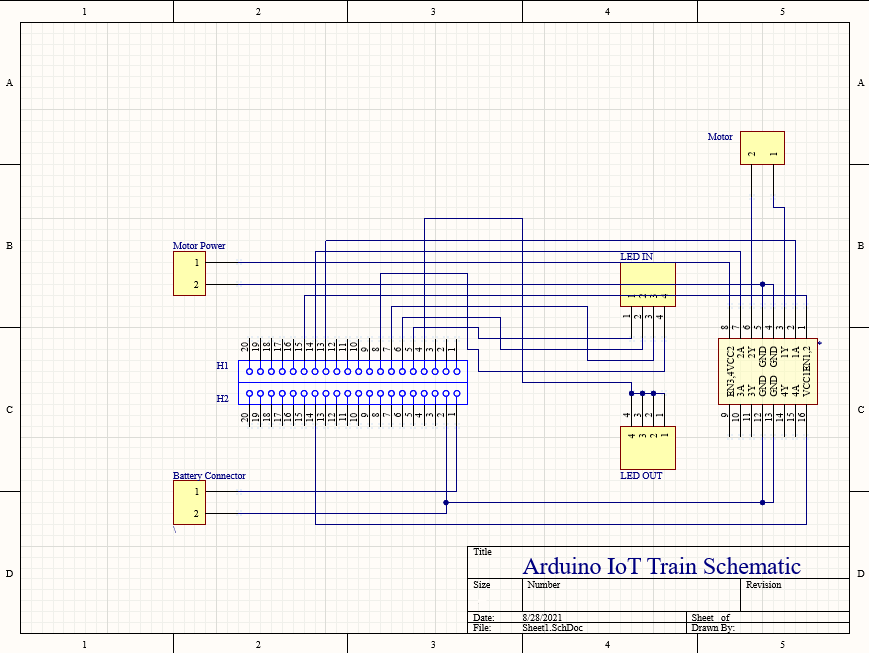1
10
11#include "thingProperties.h"
12
13
14int ledC1 = 2;
15int ledC2 = 3;
16int ledC3 = 4;
17int ledC4 = 5;
18int DUTY = 0;
19bool ledSwitch = true;
20
21
22int SC_A = 12;
23int SC_B = 8;
24
25
26int MF_A = 10;
27int MB_A = 11;
28
29int MF_B = 6;
30int MB_B = 7;
31
32
33int MDUTY = -255;
34int MDUTY_N = 0;
35int Motor_Speed;
36
37void setup() {
38
39 Serial.begin(9600);
40 Serial.println("Serial Monitor Initialized");
41
42 pinMode(ledC1, OUTPUT);
43 pinMode(ledC2, OUTPUT);
44 pinMode(ledC3, OUTPUT);
45 pinMode(ledC4, OUTPUT);
46
47 pinMode(SC_A, OUTPUT);
48 pinMode(SC_B, OUTPUT);
49 pinMode(MF_A, OUTPUT);
50 pinMode(MF_B, OUTPUT);
51 pinMode(MB_A, OUTPUT);
52 pinMode(MB_B, OUTPUT);
53
54
55 initProperties();
56
57
58 ArduinoCloud.begin(ArduinoIoTPreferredConnection);
59
60 if(!ArduinoCloud.begin(ArduinoIoTPreferredConnection))
61 {
62 Serial.println("Failed to Connect to wifi or UBLOX not initialized");
63 }
64
65
72 setDebugMessageLevel(2);
73 ArduinoCloud.printDebugInfo();
74}
75
76void loop()
77{
78 ArduinoCloud.update();
79}
80
81
82
83void onSpeedControlChange()
84{
85 Motor_Speed = speedControl;
86 MDUTY = Motor_Speed;
87
88 if(MDUTY > 0)
89 {
90 speed = MDUTY;
91 direction = true;
92
93
94 analogWrite(SC_A, MDUTY);
95 analogWrite(SC_B, MDUTY);
96
97
98 digitalWrite(MF_A, HIGH);
99 digitalWrite(MF_B, HIGH);
100
101 digitalWrite(MB_A, LOW);
102 digitalWrite(MB_B, LOW);
103 }
104
105 if(MDUTY < 0)
106 {
107
108 MDUTY_N = abs(MDUTY);
109 speed = MDUTY_N;
110 direction = false;
111
112
113 analogWrite(SC_A, MDUTY_N);
114 analogWrite(SC_B, MDUTY_N);
115
116
117 digitalWrite(MF_A, LOW);
118 digitalWrite(MF_B, LOW);
119
120 digitalWrite(MB_A, HIGH);
121 digitalWrite(MB_B, HIGH);
122 }
123
124 if(MDUTY == 0)
125 {
126 speed = MDUTY;
127
128 analogWrite(SC_A, MDUTY);
129 analogWrite(SC_B, MDUTY);
130
131
132 digitalWrite(MF_A, LOW);
133 digitalWrite(MF_B, LOW);
134
135 digitalWrite(MB_A, LOW);
136 digitalWrite(MB_B, LOW);
137 }
138}
139
140
141
142void onSpeedResetChange()
143{
144 if(speedReset == true)
145 {
146 speedControl = 0;
147 speed = 0;
148
149 analogWrite(SC_A, MDUTY);
150 analogWrite(SC_B, MDUTY);
151
152
153 digitalWrite(MF_A, LOW);
154 digitalWrite(MF_B, LOW);
155
156 digitalWrite(MB_A, LOW);
157 digitalWrite(MB_B, LOW);
158 }
159
160}
161
162
163void onLedChange()
164{
165 if(led.getSwitch() == ledSwitch)
166 {
167
168 DUTY = led.getBrightness() * 2.5;
169 Serial.println(DUTY);
170
171 analogWrite(ledC1, DUTY);
172 analogWrite(ledC2, DUTY);
173 analogWrite(ledC3, DUTY);
174 analogWrite(ledC4, DUTY);
175
176 digitalWrite(ledC1, HIGH);
177 digitalWrite(ledC2, HIGH);
178 digitalWrite(ledC3, HIGH);
179 digitalWrite(ledC4, HIGH);
180 }
181
182 else
183 {
184 DUTY = 0;
185 analogWrite(ledC1, DUTY);
186 analogWrite(ledC2, DUTY);
187 analogWrite(ledC3, DUTY);
188 analogWrite(ledC4, DUTY);
189
190 digitalWrite(ledC1, LOW);
191 digitalWrite(ledC2, LOW);
192 digitalWrite(ledC3, LOW);
193 digitalWrite(ledC4, LOW);
194 }
195}
